Ivermectin Horse Bolus – A Complete Guide for Horse Owners and Veterinarians
Internal parasites, such as worms and bots, pose a significant threat to horses, potentially causing weight loss, colic, anemia, and overall poor condition. Among the most trusted and widely used solutions is Ivermectin Horse Bolus, a broad-spectrum anthelmintic renowned for its efficacy and safety in controlling a wide range of internal parasites in horses.
What is Ivermectin Horse Bolus?
Ivermectin Horse Bolus is an oral dewormer formulated as a bolus (large tablet) designed for equine use. It contains the active ingredient ivermectin, a macrocyclic lactone derivative that targets a broad spectrum of internal parasites affecting horses.
Originally developed in the late 20th century, ivermectin revolutionized parasite control due to its potency and broad activity against multiple parasite species, including some that were previously resistant to older dewormers.
The bolus form is particularly convenient for horses, allowing for easy dosing based on weight and ensuring the correct amount of medication is administered in one dose.
Indications: What Parasites Does Ivermectin Horse Bolus Treat?
Ivermectin Horse Bolus is indicated for the treatment and control of various internal parasites in horses, including:
1. Strongyles (Large and Small)
- Large strongyles (Strongylus vulgaris, Strongylus edentatus, Strongylus equinus): These are among the most pathogenic equine parasites, causing damage to the intestinal blood vessels, leading to colic and other serious health issues.
- Small strongyles (cyathostomes): These are common intestinal parasites that can cause diarrhea, weight loss, and colic, especially in young or immunocompromised horses.
2. Roundworms (Parascaris equorum)
Common in foals and young horses, roundworms can cause poor growth, respiratory problems, and intestinal blockage if left untreated.
3. Bots (Gasterophilus spp.)
Bot flies lay eggs on the horse’s hair, which hatch and larvae migrate into the stomach and intestines. Bots can cause irritation and digestive disturbances.
4. Pinworms (Oxyuris equi)
Pinworms inhabit the colon and rectum and cause itching around the tail area due to egg-laying behavior.
5. Threadworms (Strongyloides westeri)
Affect foals, causing diarrhea and poor condition.
6. Neck Threadworms (Onchocerca spp.)
Cause skin irritation and eye problems in horses.
How Does Ivermectin Work?
Ivermectin belongs to the class of macrocyclic lactones, which act on the nervous system of parasites. This mechanism is highly effective because these channels are specific to invertebrates, so ivermectin is generally safe for mammals like horses.
Benefits of Using Ivermectin Horse Bolus
Broad-Spectrum Efficacy
Ivermectin Horse Bolus covers a wide range of common equine internal parasites in one dose, reducing the need for multiple treatments.
Convenient Oral Administration
The bolus form allows easy and accurate dosing based on the horse’s weight. It is easy to administer, with long-lasting effects.
Improved Horse Health and Performance
By controlling parasites, horses show better weight gain, improved coat condition, enhanced energy, and reduced risk of colic.
Safe for Most Horses
Ivermectin is safe for horses of various ages (except very young foals under specific weight/age), with a wide safety margin.
Reduced Resistance Development
Compared to some older anthelmintics, ivermectin has a lower risk of resistance development when used properly.
Administration Protocol and Dosage Recommendations for Ivermectin Horse Bolus
Recommended Dosage
The standard dose of ivermectin for horses is 200 micrograms per kilogram (0.2 mg/kg) of body weight. Correct dosing is essential to ensure efficacy and minimize the risk of resistance or adverse effects.
Determining the Correct Dose
- Weigh Your Horse:
Use a livestock scale or a weight tape designed for horses to accurately estimate the horse’s weight. Accurate dosing depends on knowing your horse’s precise weight. - Calculate the Dose:
Multiply the horse’s weight (in kg) by 0.2 mg/kg to find the total ivermectin dose required. - Bolus Strength:
Based on your horse’s weight and the bolus strength, calculate the number of boluses needed.
Example Dosage
| Horse Weight (kg) | Total Ivermectin Dose (mg) | Number of 18 mg Boluses |
| 250 | 50 | 3 |
| 400 | 80 | 5 |
| 500 | 100 | 6 |
| 600 | 120 | 7 |
| 700 | 140 | 8 |
Adjust the number according to the actual bolus strength.
Administration Instructions
- Restrain the Horse:
Safely and calmly restrain your horse to prevent injury during administration. - Position the Bolus:
Place the bolus as far back on the horse’s tongue as possible. - Encourage Swallowing:
Gently stroke the horse’s throat or blow lightly on its nose to stimulate swallowing. - Follow Up:
Offer some water or feed to ensure the bolus is swallowed and to make the horse comfortable.
Frequency of Treatment
- Ivermectin Horse Bolus is typically administered every 8 to 12 weeks, depending on your veterinarian’s recommendations, parasite prevalence, and pasture management.
Important Tips
- Avoid administering less than the recommended dose to prevent the development of parasite resistance.
- Always adhere to the product instructions and seek veterinary guidance for a customized parasite management plan.
Precautionary Measures, Safety Guidelines, and Potential Side Effects for Ivermectin Horse Bolus
Safety Profile
Ivermectin is generally considered safe for use in horses when administered at the recommended dosage of 200 micrograms per kilogram (0.2 mg/kg) of body weight. Its selective mechanism of action targets parasite-specific chloride channels, which are absent in mammals, contributing to its high safety margin in horses.
Precautions
- Age Restrictions:
Use caution when administering ivermectin to very young foals (usually less than 6 weeks old or under 100 pounds/45 kg), as their systems may be more sensitive. - Known Hypersensitivity:
Avoid use in horses with a history of hypersensitivity or allergic reactions to ivermectin or other macrocyclic lactones. - Accurate Dosing:
Proper weight estimation is crucial to avoid underdosing (which can lead to resistance) or overdosing (which can increase the risk of adverse effects). Use a livestock scale or weight tape for best results. - Species-Specific Use:
Ivermectin Horse Bolus is formulated specifically for horses. Do not use the product off-label in other species unless directed by a veterinarian. - Pregnancy and Lactation:
Ivermectin is generally regarded as safe during pregnancy and lactation in horses, but always consult your vet before administration. - Pasture Management:
Combine ivermectin use with good pasture hygiene and parasite control strategies to reduce parasite reinfestation and resistance development.
Possible Side Effects
Though rare, some horses may exhibit mild side effects following ivermectin treatment:
- Transient Diarrhea:
Mild and short-lived changes in fecal consistency can occur as parasites die and the gut flora adjusts. - Allergic Reactions:
Very rarely, horses may show signs of hypersensitivity such as swelling, itching, or respiratory distress. - Neurological Symptoms:
Extremely uncommon but serious signs like ataxia, trembling, or disorientation can occur if overdosed or in genetically sensitive individuals. Such reactions require emergency care.
Monitoring After Treatment
Contact your veterinarian if any unusual symptoms occur, including:
- Severe colic or abdominal pain
- Persistent diarrhea or vomiting
- Signs of allergic reaction (hives, swelling, difficulty breathing)
- Neurological abnormalities (loss of coordination, weakness)
Resistance and Best Practices for Ivermectin Use
The Challenge of Anthelmintic Resistance
Overuse or misuse of dewormers can lead to parasite resistance, reducing efficacy.
Recommendations to Prevent Resistance
- Use fecal egg count tests (FEC) to monitor parasite loads before deworming.
- Rotate dewormers based on veterinary guidance.
- Avoid unnecessary treatments.
- Implement pasture management to reduce parasite exposure.
Clinical Research and Scientific Support for Ivermectin Horse Bolus
Ivermectin has been extensively studied and widely accepted in veterinary medicine as a highly effective and safe anthelmintic for horses. Since its introduction in the 1980s, numerous clinical trials and scientific research have validated its efficacy against a broad range of internal parasites, shaping modern parasite control protocols.
1. Efficacy Against Equine Parasites
Multiple controlled studies have demonstrated ivermectin’s near-complete effectiveness against major equine parasites such as:
- Large Strongyles (Strongylus spp.):
Studies confirm ivermectin’s ability to eliminate migrating larvae and adult strongyles, which are responsible for severe vascular damage in horses. For example, a study published in the Journal of Veterinary Pharmacology and Therapeutics reported over 98% efficacy in reducing larval strongyle populations after ivermectin treatment. - Small Strongyles (Cyathostomes):
Research indicates ivermectin is highly effective against adult small strongyles, although encysted larvae may require repeated treatments or alternative drugs. A clinical trial showed significant reduction in fecal egg counts within 7 days post-treatment. - Bots (Gasterophilus spp.):
Clinical studies show ivermectin effectively eradicates bot larvae residing in the stomach, reducing irritation and digestive complications. - Roundworms (Parascaris equorum):
Ivermectin exhibits strong efficacy in foals and young horses against roundworms, with rapid parasite clearance observed in numerous trials.
2. Safety and Tolerability
Long-term studies have shown ivermectin to be well-tolerated in horses, with minimal side effects even when administered repeatedly according to recommended guidelines. A review in the Equine Veterinary Journal highlights ivermectin’s wide therapeutic margin and minimal adverse events across diverse equine populations.
3. Comparative Studies
Comparative clinical trials have often found ivermectin superior to older dewormers such as fenbendazole and pyrantel in terms of spectrum of activity, speed of action, and duration of effectiveness.
4. Pharmacokinetics
Research into the pharmacokinetics of ivermectin in horses demonstrates good oral bioavailability and sustained plasma levels, which contribute to its prolonged activity against parasites. These studies support the bolus form’s convenience and reliability in delivering consistent dosing.
Conclusion
Ivermectin Horse Bolus stands out as a highly effective and reliable solution for managing internal parasites in horses. Its broad-spectrum efficacy against a wide range of parasites—including strongyles, roundworms, bots, and pinworms—makes it an essential part of any equine parasite control program. The bolus form provides convenient dosing tailored to your horse’s weight, ensuring accurate and easy administration. When used responsibly and in combination with good pasture management and regular veterinary oversight, Ivermectin helps maintain your horse’s health, performance, and overall well-being. By preventing parasite-related illnesses, it supports optimal growth, energy, and longevity in horses of all ages.







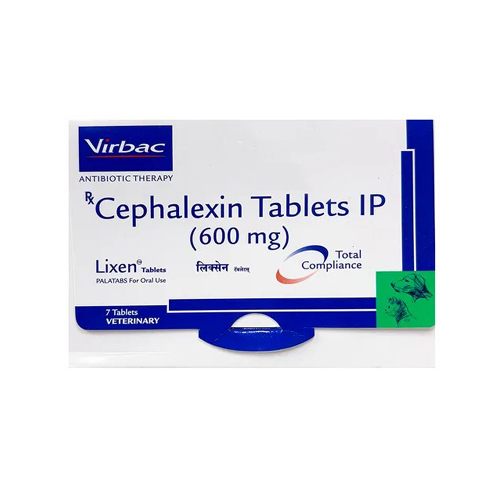
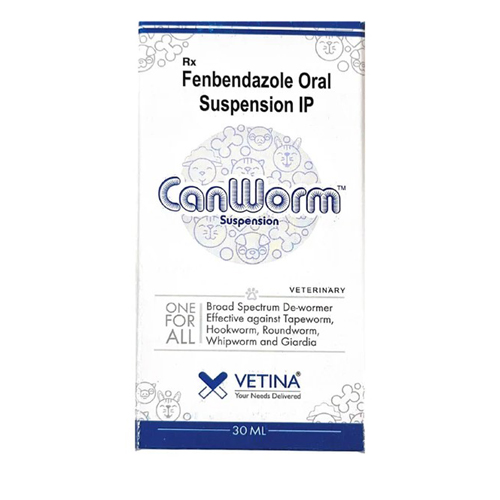



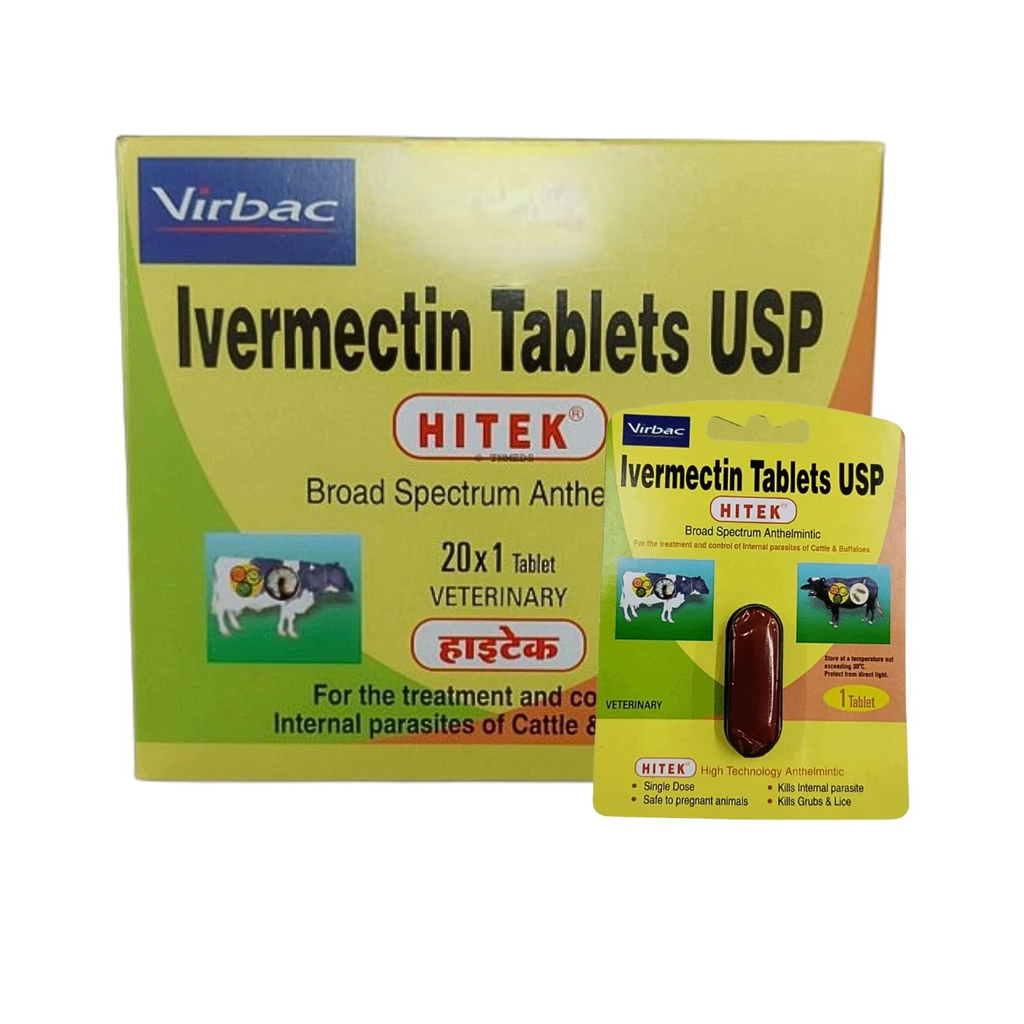
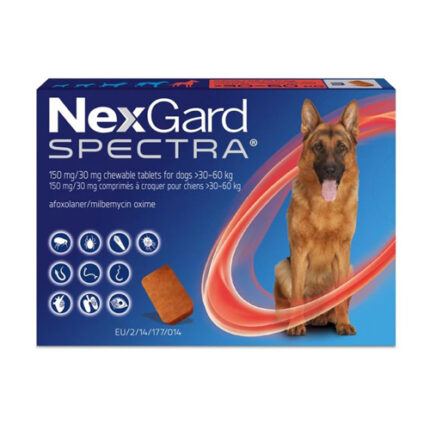
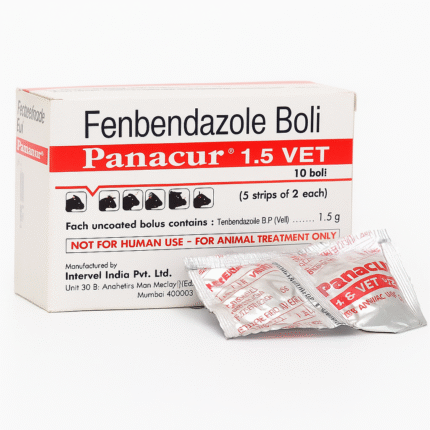
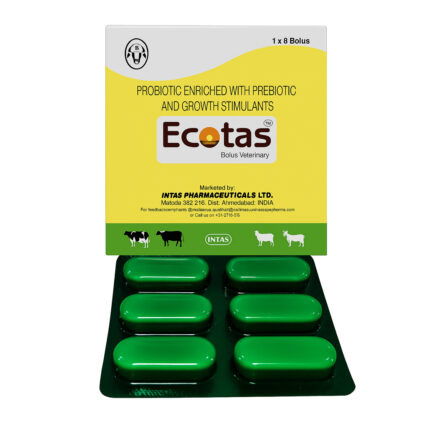
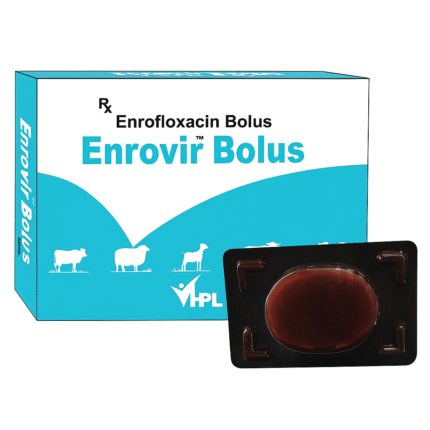
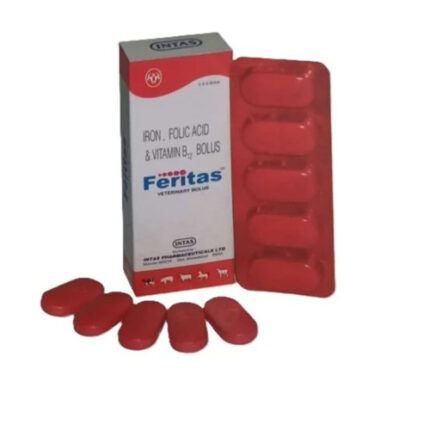
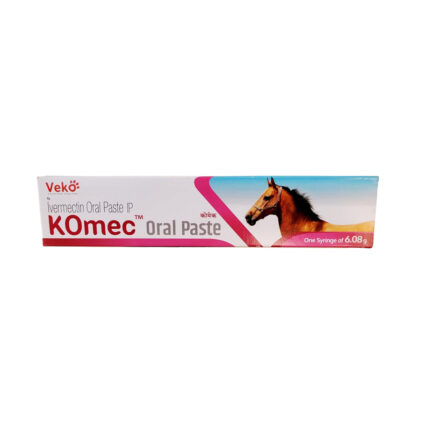
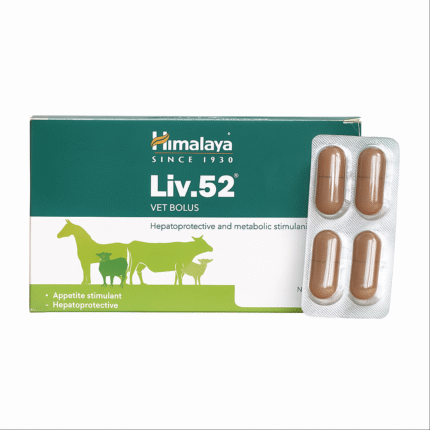
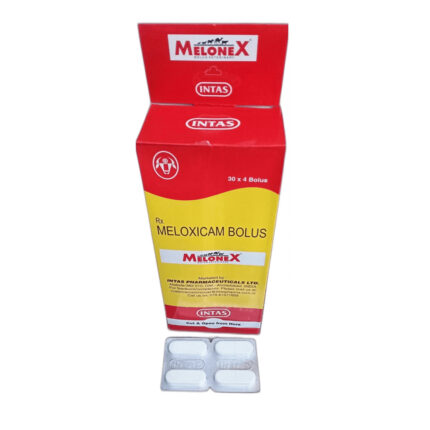
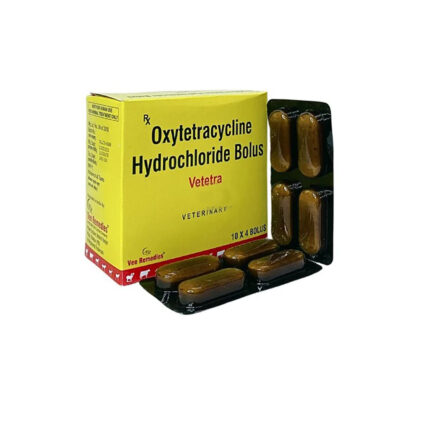
Reviews
There are no reviews yet.